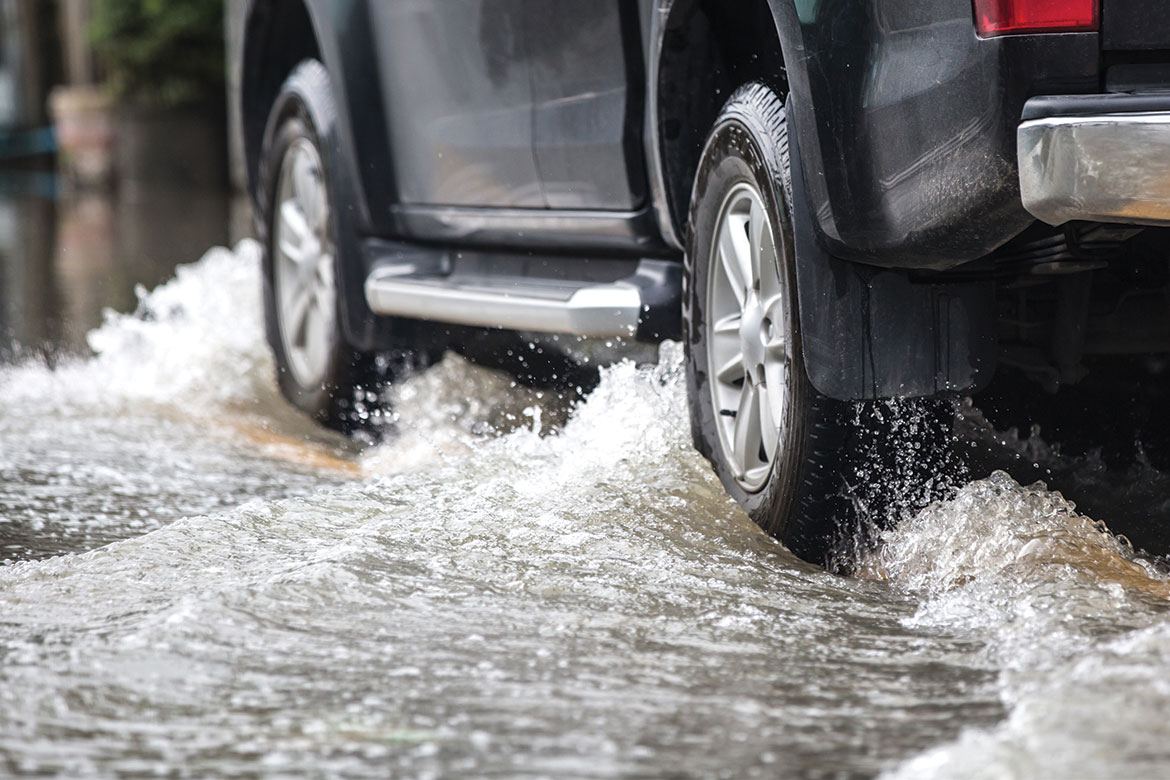The heavy rains that occur during severe storms and hurricanes can wreak havoc on your home, and there’s another major threat that extreme weather can bring: flooding. According to National Geographic, “floods are among Earth’s most common — and most destructive — natural hazards.” Even just a few inches of water can create dangerous and even deadly conditions.
While it’s important to stay away from areas at high risk for flooding, flooding can occur anywhere rain falls. If you suddenly find yourself in a flash-flood condition, there are some smart hurricane safety tips to follow to stay safe.
Car safety
Encountering rising waters while you’re driving is scary, to say the least. Being prepared is crucial to staying safe in this life-or-death scenario. A good way to do this is to keep escape tools in your car in case you have to break a window to get out of your vehicle. Be sure to store these tools so that they’re accessible to the driver’s seat by placing them in the glove compartment, middle console, or side-door compartments.
A recent AAA report cited by USA Today found that hammers and spring-loaded tools were ineffective at breaking laminated glass — often used for windshields and sometimes for side windows to avoid creating large pieces of glass — but many were successful at shattering tempered glass, which is usually used for rear windows.
It’s important to know which windows can provide an escape route before you’re caught in a flood. You should have a plan that helps you exit quickly.
Other things to remember in a flood — no matter where you are
Even if you’re not in your vehicle when a flood strikes, you can still be in danger. No matter where you find yourself, it’s always important to try to get away from oncoming waters and follow these hurricane safety tips:
-
● Always evacuate when you’re told to.
● Never try to walk, swim, or drive to get through flood waters. Even seemingly shallow levels can sweep you away.
● Move to higher ground if possible — if you’re in your house or a building, move to a higher floor.
● Stay where you are and make yourself as safe as possible. Conditions can change in an instant, and debris can block roads, so travelling to get away from a flood usually isn’t a good option.
● Be extra cautious at night, when less visibility can obscure flood waters.
The most important hurricane safety tip: always be prepared
Planning for the best outcome even if the worst situation occurs is important. Knowing your flood risk is a big part of that. You can find out if you’re in an area prone to floods using FEMA’s Flood Map Service Center, which allows you to input your address to assess the hazards and prepare accordingly.
The National Weather Service (NWS) also advises that when you’re away from home during a heavy storm, you should always be sure to check the warnings in your neighborhood before trying to return. Heed all street closures and never try to get around barricades.
After the flood, there can still be danger. NWS instructs individuals to:
- Stay tuned to local news for updates on weather and road conditions.
- Be sure that your water is safe to use — you may have to boil water for a time after a flood.
- Wait to hear the all clear from authorities before entering disaster areas. There could be electrical lines down, buildings may not be secure, and even tree branches and other debris could pose an imminent threat.




